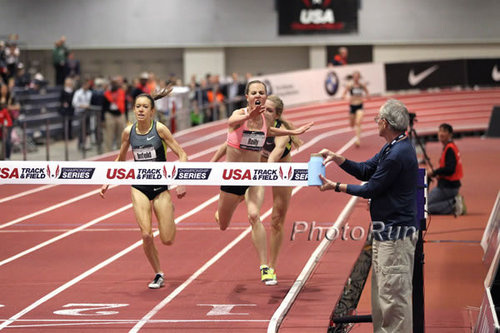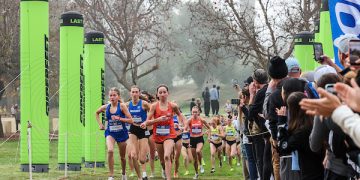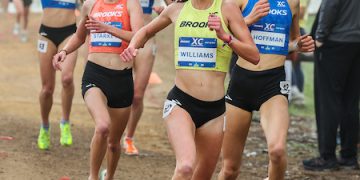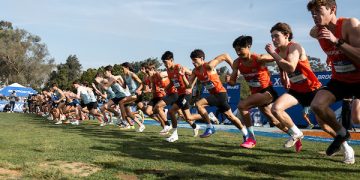Men’s Indoor 1500-meters Controversy, and What It Means to You
by Jon Gugala
On Thursday night I broke the story of Riley Masters, a Brooks Beast, getting the short end of the stick when it came to heat selection in the USA Indoor Championships men’s 1500-meters. I reported that there would be two heats–something no one had heard at that point, which wasn’t even on the USATF online schedule of events, and of which USATF statistician Glen McMicken, who handled all questions on the entries for the 2014 USA Indoor Championships, said Thursday night he had no idea about until he saw the heat sheets.
In that initial story, I called the second heat, or “B” heat, that Masters was placed in as an “exhibition,” and I went on to say that it wouldn’t be considered for selection of a national team or national champion. This was based on what Brooks Beast head coach Danny Mackey said in an interview, as well as what Masters said in our interview. At 9:49 a.m. this morning, the Athletes Advisory Twitter account posted, “the two sections are timed finals,” going on to say that the top three, i.e. the national team, can come from either section.
I am fine being wrong in certain details. There’s a certain amount of speed that these stories, treated as news, require. And I’m fine admitting I was wrong in this regard.
But the larger point of this story should be taken as this: In Albuquerque, less than a day before the start of a national championship, no one knew what was going on.
The athletes didn’t know what was going on.
The journalists didn’t know what was going on.
The agents didn’t know what was going on.
THE FANS DIDN’T KNOW WHAT WAS GOING ON.
And even large sections of USATF didn’t know what was going on.
When this happens on the eve of a national championship, that’s a problem.
In a follow-up interview today after USATF’s clarifying tweet, Masters says that he wasn’t alone in the “exhibition” rumor; many athletes believed the same when they were checking in to the meet on Thursday. Jill Geer, USATF Chief Public Affairs Officer, has emailed a partial statement at 1:05 p.m. CST, reiterating the fact that “BOTH races are championship-eligible and team-eligible,” but that two heats may yet be combined into one depending on scratches. (This would likely have to do with the results of the men’s 3000m final.) She also says that they’re still trying to untangle the seeding information procedures that placed Masters into the “B” heat, which is substantially slower by seed time than the “A,” despite his faster qualification time.
Masters’ agent Matt Lane says that he has spoken with USATF about the issue of his client’s seeding, and that there “seems to be a solution in the rules” that would lead to a “positive result,” i.e. Masters in the “A” heat. But that hasn’t happened yet.
Why is this a story? Because USATF allows it to be one. There are enough USATF employees on the ground in Albuquerque that are simply ignorant of the myriad rules that govern the sport of track and field. You want to kill a rumor? Have truth readily accessible and clearly posted. USATF at USATF Indoors does not.
Over the course of today, there’s been a lot of talk about what can and should be done in Masters’ situation. LetsRun.com founder Robert Johnson says the short-term solution is simple: Put Masters in the “A” heat (http://www.letsrun.com/news/2014/02/simple-common-sense-solution-potential-1500-controversy-2014-usa-indoor-track-field-championships/). But that’s only in the short-term. The bigger issue, a lack of transparency in USATF rulings, is why many are eager, as I am, to rally behind Masters and his plight.
Phoebe Wright, Masters’ Beasts teammate, was quick to point this out. “USATF, Can We get some transparency in the procedure please?” she tweeted this afternoon. That’s what Wright wants, and it’s what I want and it’s what every other person that retweeted the story or posted on the message board or editorialized on the situation. If we clearly understand why these seemingly arbitrary decisions are made, like several athletes slower than Masters being placed in the “A,” then suspicions about sponsor preferential treatment come out stillborn.
The air in Albuquerque is supposed to be thinner, but USATF so far has made it difficult to see the truth.
Author
-

Larry Eder has had a 52-year involvement in the sport of athletics. Larry has experienced the sport as an athlete, coach, magazine publisher, and now, journalist and blogger. His first article, on Don Bowden, America's first sub-4 minute miler, was published in RW in 1983. Larry has published several magazines on athletics, from American Athletics to the U.S. version of Spikes magazine. He currently manages the content and marketing development of the RunningNetwork, The Shoe Addicts, and RunBlogRun. Of RunBlogRun, his daily pilgrimage with the sport, Larry says: "I have to admit, I love traveling to far away meets, writing about the sport I love, and the athletes I respect, for my readers at runblogrun.com, the most of anything I have ever done, except, maybe running itself." Also does some updates for BBC Sports at key events, which he truly enjoys.
Theme song: Greg Allman, " I'm no Angel."
View all posts






















